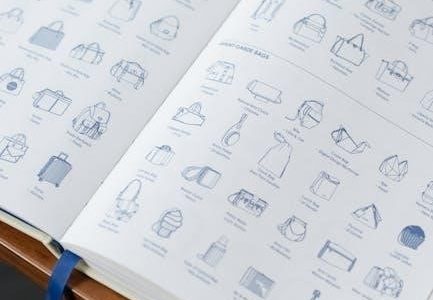The C0 Sampling Plan Table is a statistical tool used in quality control to ensure zero defects in products. It guides the sampling process by defining sample sizes and acceptance criteria, ensuring high-quality production standards are met consistently.
What is a C0 Sampling Plan?
A C0 Sampling Plan is a type of acceptance sampling plan that requires a strict zero-defect policy. It ensures that no defective units are accepted in a sample, making it ideal for industries where product quality is critical. This plan is characterized by an acceptance number (c) of zero, meaning even one defect in the sample leads to lot rejection. It is widely used in quality control processes to maintain high standards and minimize the risk of defective products. The plan is particularly effective in scenarios where the cost of defects is extremely high, such as in medical devices or aerospace components.
Importance of C0 Sampling in Quality Control
The C0 Sampling Plan plays a vital role in quality control by ensuring zero defects in products, which is critical for maintaining customer satisfaction and brand reputation. It minimizes the risk of defective lots entering the market, thereby enhancing product reliability and safety. This approach is particularly essential in industries like aerospace and healthcare, where even a single defect can lead to severe consequences. By implementing C0 Sampling, organizations can achieve high-quality production standards, reduce costs associated with defective products, and build trust with consumers. Its strict criteria ensure that only flawless products reach the end-user.

Key Parameters of C0 Sampling Plan
The C0 Sampling Plan relies on critical parameters: Acceptance Number (c=0), Sample Size (n), Acceptable Quality Level (AQL), and Operating Characteristic (OC) Curve, ensuring precise quality control implementation.
Acceptance Number (c)
The Acceptance Number (c) in a C0 Sampling Plan is set to zero, meaning no defects are tolerated. This strict criterion ensures that any defect found during inspection leads to lot rejection, maintaining high-quality standards. The zero-tolerance policy minimizes the risk of defective products reaching consumers, making it ideal for critical industries like aerospace and medical devices. By adhering to this parameter, businesses ensure reliability and safety, aligning with stringent quality control requirements. The c=0 approach is fundamental to the effectiveness of the C0 plan in achieving flawless production outcomes.
Sample Size (n)
The Sample Size (n) in a C0 Sampling Plan is the number of units randomly selected from a lot for inspection. It is determined based on the lot size and the desired confidence level, ensuring a statistically valid assessment of quality. The C0 table provides specific sample sizes for different lot size ranges, helping organizations balance inspection efficiency with quality assurance. Larger lots typically require larger sample sizes to maintain reliability. The selected sample size must be practical while providing sufficient confidence in the lots quality, ensuring the zero-defect policy is effectively enforced. This parameter is critical for the plans effectiveness in maintaining high standards.
Acceptable Quality Level (AQL)
The Acceptable Quality Level (AQL) is a critical parameter in the C0 Sampling Plan, representing the maximum percentage of defective units allowable in a lot. AQL levels are predefined and used to determine the appropriate sample size for inspection. In a C0 plan, the AQL is tied to the zero-defect requirement, ensuring that lots with defects are rejected. Higher AQLs may require larger sample sizes to maintain statistical confidence. The AQL is essential for balancing quality standards with practical inspection requirements, ensuring the plan aligns with industry norms and product criticality. It plays a key role in maintaining the integrity of the zero-defect policy, especially in high-stakes industries like aerospace and medical devices.
Operating Characteristic (OC) Curve
The Operating Characteristic (OC) Curve graphically represents the probability of accepting a lot based on its defect level under a C0 Sampling Plan. It illustrates how the plan performs across different quality levels, showing the likelihood of lot acceptance or rejection. For C0, the curve is stringent, as even a single defect leads to rejection. The OC curve helps evaluate the plan’s effectiveness, ensuring it meets quality objectives. It visually demonstrates the balance between consumer risk and producer risk, aiding in decision-making for maintaining high-quality standards and minimizing defective lots in production processes.

Structure of the C0 Sampling Plan Table
The C0 table organizes lot sizes into ranges, assigning specific sample sizes and AQL levels to guide selection and ensure efficient, defect-free quality control for high-quality production processes.
Lot Size and Sample Size Relationship
The C0 Sampling Plan Table categorizes lot sizes into distinct ranges, each corresponding to a specific sample size. This relationship ensures that the sampling process is both efficient and statistically valid. For instance, smaller lot sizes require fewer samples, while larger lots necessitate more extensive sampling to maintain accuracy. The table provides clear guidelines, allowing users to quickly identify the appropriate sample size for their lot, ensuring that quality control remains consistent and reliable across all production scenarios. This structured approach minimizes the risk of defective lots without overly burdening the inspection process.
Multiple AQL Levels in the Table
The C0 Sampling Plan Table incorporates multiple AQL (Acceptable Quality Level) levels, allowing users to tailor their quality control processes to specific requirements. AQL levels represent the maximum percentage of defective units permissible in a lot. The table provides distinct sample sizes for each AQL, ensuring that the sampling plan aligns with the desired level of quality assurance. This feature enables organizations to adopt stricter or more lenient criteria based on their industry standards or product criticality. By offering multiple AQL options, the table enhances flexibility, making it suitable for a wide range of applications while maintaining the zero-defect tolerance of the C0 plan.
Interpreting the Table for Effective Sampling
Interpreting the C0 Sampling Plan Table involves matching the lot size to the appropriate sample size and AQL level. Each row represents a specific lot size range, while columns correspond to different AQLs. Users identify their lot size and select the corresponding sample size based on their chosen AQL. The table ensures statistically valid samples, balancing accuracy and efficiency. This systematic approach minimizes human error, enabling effective quality control decisions. By following the table, organizations can consistently apply the zero-defect standard, ensuring high-quality products and customer satisfaction. Regular updates and reviews of the table help maintain its relevance and effectiveness in varying production scenarios.
Applications of C0 Sampling Plan
The C0 Sampling Plan is ideal for industries requiring zero defects, such as medical devices, aerospace, and critical component manufacturing, ensuring high-quality products and customer satisfaction.
Industries Requiring Zero Defects
Industries requiring zero defects, such as medical devices and aerospace, rely on C0 sampling plans to ensure absolute quality. In medical devices, even minor defects can compromise patient safety, making C0 plans critical for regulatory compliance and reliability. Similarly, in aerospace manufacturing, the failure of a single component can lead to catastrophic consequences, necessitating a zero-defect tolerance. These industries often involve high-stakes applications where defect-free products are non-negotiable, making the C0 sampling plan an essential tool for maintaining safety, performance, and customer trust.
Use in Critical Component Inspection
C0 sampling plans are widely used in the inspection of critical components where defect tolerance is zero. These components, often found in aerospace, automotive, and medical industries, require absolute reliability. The C0 plan ensures that even a single defect in a sample leads to lot rejection, safeguarding against potential failures. This approach is vital for components whose malfunction could result in safety hazards or operational shutdowns. By adhering to strict acceptance criteria, the C0 plan minimizes risks and ensures the delivery of defect-free critical parts, maintaining customer trust and operational integrity.
Applications in Medical and Aerospace Industries
The C0 Sampling Plan is indispensable in medical and aerospace industries, where product failure can have severe consequences. In medical devices, it ensures patient safety by rejecting any batch with defects. Similarly, in aerospace, it maintains the integrity of critical components, preventing potential catastrophic failures. The zero-defect policy aligns with stringent regulatory requirements, making it a cornerstone of quality control in these sectors. By using the C0 plan, industries can uphold the highest standards, safeguarding lives and maintaining operational excellence.

Advantages of C0 Sampling Plan
- Strict quality control: Ensures zero defects, maintaining premium product standards.
- Minimized risk of defective lots: Rejects any batch with defects, safeguarding consumer satisfaction.
- Efficiency in high-quality production: Streamlines inspection processes while upholding rigorous quality benchmarks.
Strict Quality Control
The C0 sampling plan enforces a zero-tolerance policy for defects, ensuring products meet the highest quality standards. By rejecting any lot with defects, it minimizes the risk of non-compliant products reaching consumers. This approach is particularly beneficial in industries like medical devices and aerospace, where even minor defects can have severe consequences. The strict criteria help maintain consistent quality, protect brand reputation, and build customer trust. While the plan may seem rigid, it is highly effective for manufacturers with mature, high-quality processes, ensuring excellence without unnecessary resource expenditure.
Minimized Risk of Defective Lots
The C0 sampling plan significantly reduces the risk of accepting defective lots by adhering to a zero-defect policy. This approach ensures that any lot containing even a single defect is rejected, thereby safeguarding consumer interests. The strict criteria minimize the probability of defective products entering the market, enhancing overall quality and reliability. This method is particularly effective in high-stakes industries where defect tolerance is nonexistent. While the plan may require larger sample sizes in some cases, the assurance of defect-free lots makes it a valuable tool for maintaining quality standards and reducing potential liabilities. Its implementation is both practical and protective.
Efficiency in High-Quality Production Scenarios
The C0 sampling plan excels in high-quality production environments where defect rates are inherently low. By focusing on zero defects, it streamlines the inspection process, reducing unnecessary scrutiny of already reliable products. This efficiency allows manufacturers to allocate resources effectively, minimizing costs without compromising quality. The plan’s streamlined approach ensures rapid decision-making, making it ideal for industries with proven track records of excellence. Its implementation not only upholds stringent quality standards but also optimizes production workflows, ensuring that high-quality outputs are consistently achieved with minimal inspection effort. This balance of efficiency and rigor makes it a preferred choice for maintaining operational excellence.

Limitations of C0 Sampling Plan
The C0 plan’s strict acceptance criteria can lead to higher rejection rates, potentially discarding good lots. Its zero-tolerance policy may not suit all production scenarios, limiting flexibility;
Stringent Acceptance Criteria
The C0 sampling plan’s strict acceptance criteria mandate that any defect found in the sample results in lot rejection. This zero-tolerance policy increases the risk of rejecting good lots, especially when defects are rare. Such stringency can lead to higher production costs, extended lead times, and strained supplier relationships. Additionally, it may not be practical for industries where achieving zero defects is challenging or where minor imperfections do not critically affect product functionality. This rigidity makes the C0 plan less flexible compared to traditional sampling methods, potentially limiting its applicability in certain manufacturing scenarios.
Potential for False Rejection
The C0 sampling plan’s strict zero-defect requirement increases the likelihood of rejecting lots that are actually of acceptable quality. This occurs when a defect is found in the sample, even if the overall lot quality is high. Such false rejections can lead to unnecessary costs, production delays, and strained supplier relationships. The plan’s rigidity makes it prone to over-rejection, especially when defects are rare or minor. This limitation highlights the need for careful consideration of the sampling plan’s suitability for specific products and processes, balancing quality assurance with practical manufacturing realities.
Practical Challenges in Implementation
Implementing a C0 sampling plan presents several practical challenges. The zero-defect requirement demands rigorous inspection processes, increasing costs and time. Achieving perfect defect-free samples can be difficult, especially in complex manufacturing environments. Additionally, the plan’s strict criteria may lead to conflicts with suppliers who cannot consistently meet such high standards. Training inspectors to maintain accuracy under this system is also resource-intensive. Furthermore, the plan’s inflexibility makes it unsuitable for industries with naturally higher defect rates, requiring alternative sampling methods. These challenges highlight the need for careful planning and resource allocation when adopting C0 sampling plans.

Selecting the Right C0 Sampling Plan
Selecting the right C0 sampling plan involves balancing lot size, AQL, and risk levels to ensure effective quality control while maintaining practicality in inspection processes and resource allocation.
Steps to Determine the Best Fit
To determine the best-fit C0 sampling plan, start by defining the lot size and identifying the corresponding range in the table. Next, establish the Acceptable Quality Level (AQL) based on industry standards or organizational requirements. Using these parameters, select the appropriate sample size from the table. Ensure the chosen plan aligns with the desired risk levels and quality objectives. Finally, validate the plan by reviewing historical data and adjusting as necessary to optimize quality control and efficiency in the production process.
Factors Influencing Plan Selection
Several factors influence the selection of a C0 sampling plan, including lot size, Acceptable Quality Level (AQL), industry standards, and the cost of inspection. The desired level of quality assurance, historical data on defect rates, and the potential impact of defects on product performance also play significant roles. Additionally, the availability of resources and the risk tolerance of the organization are critical considerations. By evaluating these factors, businesses can choose a C0 sampling plan that effectively balances quality control with practical implementation, ensuring high standards while maintaining operational efficiency.
Implementing C0 Sampling Plan in Practice
Implementation involves a systematic approach, ensuring samples are representative and inspected thoroughly. Documentation and continuous review processes are essential to maintain quality standards and operational efficiency.
Systematic Approach to Execution
A systematic approach to executing C0 sampling plans involves clear steps: defining lot size, selecting sample size from the C0 table, and randomly inspecting samples. If no defects are found, the lot is accepted; otherwise, it is rejected. This method ensures consistency and accuracy. Proper documentation and adherence to the plan are crucial for maintaining quality standards. Regular training and process reviews help teams stay aligned with the plan’s requirements, ensuring effective implementation and continuous improvement.
Documentation and Review Processes
Documentation is critical in C0 sampling plans to ensure traceability and compliance. Records should include sample size, inspection results, and acceptance criteria. Regular reviews of the sampling process are conducted to assess effectiveness and identify improvements. These reviews involve evaluating the accuracy of sample selection, defect detection, and adherence to the C0 plan. Audits may also be performed to verify compliance with quality standards. Proper documentation and periodic reviews ensure the sampling plan remains robust, maintaining high-quality outcomes and customer satisfaction while aligning with regulatory requirements.
The C0 Sampling Plan Table is a valuable tool for ensuring zero-defect quality control, minimizing risks, and maintaining high standards; Its structured approach guarantees effective and efficient sampling, making it indispensable for industries requiring utmost precision and reliability.
The C0 Sampling Plan offers numerous benefits, primarily its strict zero-defect policy, ensuring high-quality products. It minimizes the risk of defective lots, enhancing consumer protection and trust. The plan is highly efficient in scenarios where defect tolerance is zero, such as in aerospace or medical industries. By rejecting lots with even a single defect, it maintains stringent quality standards. This approach reduces the likelihood of costly recalls and reputational damage. Overall, the C0 plan is a robust tool for organizations prioritizing excellence and reliability in their products.
Final Thoughts on Effective Usage
The C0 Sampling Plan is a powerful tool for ensuring zero-defect quality, making it ideal for critical industries like aerospace and healthcare. Its strict criteria guarantee high reliability and customer satisfaction. However, it may not be suitable for all scenarios, as it can lead to higher inspection costs and potential false rejections. Effective use requires careful consideration of product risks, production history, and quality objectives. By aligning the C0 plan with specific needs, organizations can maximize its benefits while minimizing drawbacks, ensuring a balance between quality and efficiency in their operations.

